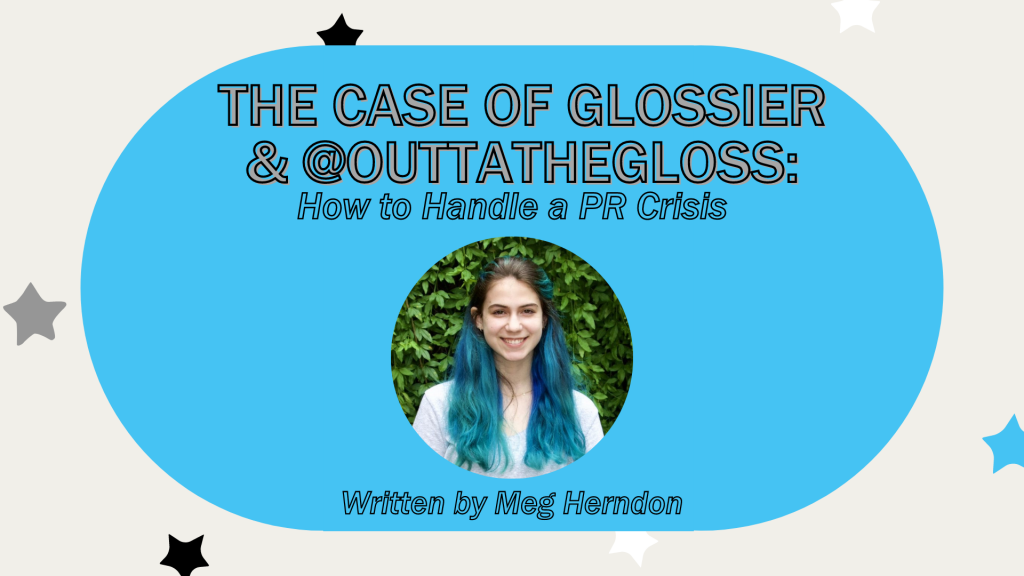The Case of Glossier and @outtathegloss: How to Handle a PR Crisis

Glossier is a cult favorite beauty and skincare company that was founded in 2014 by Emily Weiss and is valued at more than $1.2 billion. Glossier is predominantly an online storefront, relying on the internet and social media to sell its products, with a few physical stores in New York City, Los Angeles and London. It originally started as a beauty website, Into the Gloss, that featured people sharing their favorite products and beauty insider information.
As the company has risen in popularity, it has not gone without criticism. On Aug. 13, 2020, an Instagram page appeared called @outtathegloss. This account is a collective of former Glossier retail employees. Their first post was an open letter to Glossier as well as a list of demands. This open letter included many accusations against the company, including a culture of “anti-Blackness, transphobia, ableism and retaliation that many retail employees experienced.”
Glossier responded to these accusations saying that many of these instances had already been brought to their attention and investigated. However, this response was not accepted or seen as adequate by @outtathegloss and most of the public that had been following the situation.
It is now almost a year after the accusations. @outtathegloss has not posted since Dec. 19, 2020. They stated in the post, “This isn’t the end of our boycott, and we have so much more in the works.” It appears that the demands of the ex-employees were never fully met and there have been very few, if any, updates on the matter from either side.
While the situation has by no means ruined Glossier’s brand reputation, it has dulled their shine in some of the makeup community’s eyes.
So, what can we, as PR practitioners and students, learn from this for when we experience a crisis?
1. Proactive Phase.
Although Glossier said that they were aware of these issues, it does not seem they were prepared for @outtathegloss to drop. Every PR Practitioner should be prepared for crises and partake in environmental scanning. This includes staying updated on your organization, listening to and reading your environment, watching current affairs and so on.
2. Reactive Phase.
Glossier’s response did address the issue in a timely manner. When responding to a crisis, doing so in the first 24 hours is key. However, the response sets the tone of how the organization will fare during the crisis, so make sure to respond wisely to the crisis at hand. Some strategies to respond to a crisis are denial, excuse, justification, corrective actions, and apology.
3. Recovery Phase.
In the recovery phase, you should focus on reputation management and image restoration. Reputation Management is the systematic approach you take to understand the state of your organization’s reputation. This is the time to handle, build, and bolster your brand’s reputation.
4. Crisis Management Does Not Stop After Recovery.
Go back to the proactive phase and continue to scan your environment, do not let your guard down just because there may not be a crisis in sight. Also, remember that multiple crises can be happening at the same time. In addition, there will always be ongoing issues within an organization or industry, and part of a PR practitioners’ job is staying up to date with them and thinking of potential solutions.

Meg Herndon is a senior at Samford University majoring in journalism and mass communications and concentrating in public relations and advertising. She is a member of PRSSA and AAF. In her free time, you can find her reading, playing with her dogs, or hanging out with friends. Connect with her on linkedin.
